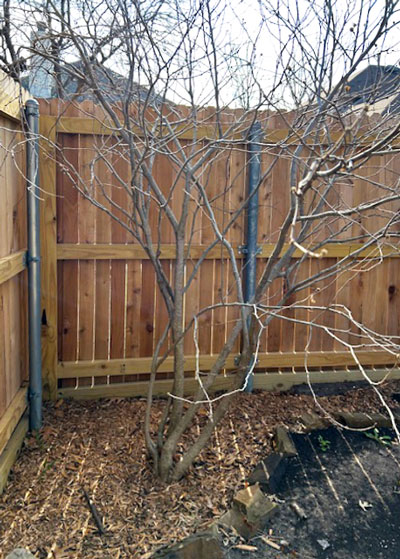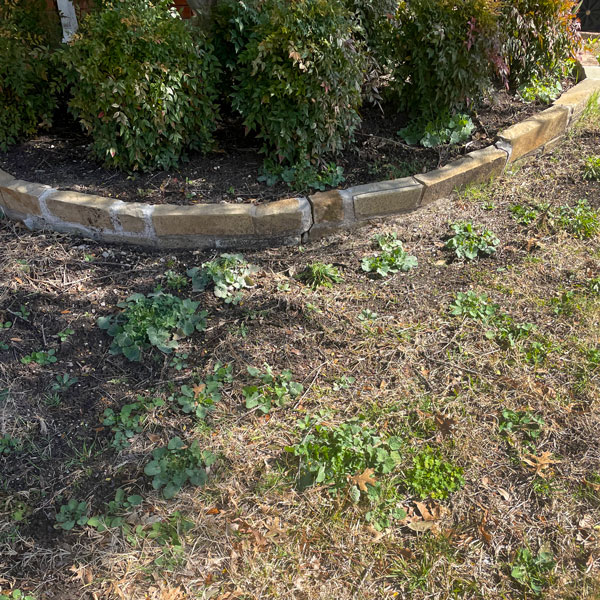Q&A – Ask Neil: February 20, 2025
(Please read these instructions carefully.)
Before you post your question, please look at recent issues to see if someone else has already asked it. You might find your answer there.
How to submit your question…
(Note: You may need to allow a pop-up window to come up in order to get the link for sending your photo(s). If you have already submitted your question and didn’t see the pop-up window, please click here.)
• Click the link provided below to post your question. After you submit your question, a new window will pop up giving you the address to which you can e-mail a SHARP, HIGH-RESOLUTION PHOTO to accompany your question. Please DO NOT SEND THUMBNAIL PHOTOS in case I need to zoom in to see things.
• Click here to post your question.
• Please ONLY POST YOUR QUESTION ONE TIME. We can only accept a set number of questions each week, and when we get duplicates it costs other people their chances.
• One question per reader, please.
• Please use this only for posting questions – not for standard emails.
• Watch for your answer in the following week’s e-gardens.
• I choose those of greatest general interest. For example, plant IDs seldom make the cut.
• I must have your first name or initials.
• I must have your city or county. (Texas is a very large state.)
QUESTION 1
HOW CAN I FIND A GOAT-CLEARING SERVICE FOR MY AREA?
Question: We have 2 acres at the back of our property that are badly overgrown. Do you know of a goat-clearing or landscaping service that could do a job of that size? Deb O., Cedar Hill, Dallas County.
Answer: I do not know of one for your area, but I would suggest several places you could ask that probably would. The Dallas County office of the Texas AgriLife Extension Service of Texas A&M probably keeps such names on file. I worked in that office many years ago and we had various lists of that sort. Your Cedar Hill Chamber of Commerce might know of one, and farm supply feed stores in Cedar Hill, Midlothian, Red Oak, Duncanville, and other nearby cities would almost assuredly know if anyone did. Your city hall offices, especially the park and recreation people, may use such services. School ag teachers may have contact with people in the business.
This is a great question that I’ve never been asked before. I’ve seen goats doing their work, and I know they are very efficient at clearing brush and brambles, poison ivy and all. Good luck!
QUESTION 2
HOW CAN I PRUNE MY ROSE-OF-SHARON SHRUB TO ENCOURAGE IT TO GROW TALLER?
Question: How can I prune my rose-of-Sharon that is growing sideways instead of up? Can I cut off the branches that are growing at more of a 45-degree angle, or will that kill the whole plant? Cheryl B., Garland.

Answer: It certainly won’t kill it. In fact, that’s exactly what you need to do. Trim the outward-facing branches back flush with the trunks. That will send water and nutrients up into the top growth so the plant will grow taller. With the fence on one side and with many branches already above it, new growth will abound. That assumes there is no large tree casting heavy shade overhead. It doesn’t look like there is. This should be an easy pruning job for this weekend. Remove one branch at a time until you have the look that you like.
QUESTION 3
SHOULD I TRANSPLANT MY PLUM TREES? (I’LL EXPLAIN.)
Question: Several years ago, we planted four peach trees. A year later we planted two plum trees next to the peach trees. Later I heard you should not plant plum trees next to peach trees. If this is true, can I transplant my plum trees without killing them? Mike F., Midland.
Answer: There is no reason to worry about this. Someone was passing out very bad information. Peaches and plums are very closely related species, so perhaps that set off some alarm bell somewhere – some worry about plant incest. But you and your plants will be fine. It’s always a good idea to have a second variety of either peaches or plums blooming at the same time in your same landscape. Methley plums are excellent cross-pollinators. Peaches are self-fertile, but having a second variety makes things even better.
QUESTION 4
WHAT IS YOUR OPINION ON CLIMATE CHANGE?
Question: As a seasoned gardener and an expert in your vast field, what is your opinion of climate change? What changes have you witnessed, and what do you see for the future? Steven S., New Braunfels.
Answer: First, you give me far too much credit. I’ve always done my best to be a credible horticulturist, and there are times when even that has been a challenge. Science has brought exciting changes to my industry.
I have two college degrees in floriculture and ornamental horticulture. I grew up next door to a professor of Oceanography and Meteorology at Texas A&M, and I have worked weekly with Metroplex weather people dating back as far as the wonderful Harold Taft.
But that’s it – the limit of my “training.” I don’t have the credentials to offer any professional opinion. My personal observation would be that our weather is probably long-term cyclical and short-term concerning. It does seem that our summers have gotten much hotter, but I wonder if that won’t be balanced out by more moderate times before long. I know I’m ready.
I’m more concerned about our water supplies. They are certainly affected by rainfall, but even with “normal” annual rainfall (whatever that is), with so many more people moving into Texas, it seems like we’re destined to have water shortages into the distant future. So, water conservation will always remain a critical topic. That’s been true for many decades. Climate changes or not, we need to work on our stewardship of the resources we’ve been given.
QUESTION 5
WHICH WOULD BE MY BEST ST. AUGUSTINE CHOICE IN FRISCO?
Question: My home faces south, with two 20-year-old southern magnolias. The lawn is bermuda now, but it’s suffering to survive in the shade. I’m researching St. Augustine and trying to determine which would be best. I’m leaning toward Palmetto. I’ve looked at Raleigh and ProVista. What would your recommendation be? Russell B., Frisco.
Answer: Good for you for the care that you’re taking and the careful and sufficient pruning you’ve done to your magnolias. (I’m sad for your neighbor’s tree.)
I grew up in South Central Texas with “common” St. Augustine, and because I’m a creature of habit, St. Augustine has always been my preferred turfgrass. However, like you, I live in Collin County, and we get much colder up here than where I grew up. St. Augustine decline (SAD), a fatal virus, was wiping out all St. Augustine turf across Texas when my wife and I moved to the Metroplex from Ohio in 1970. When we built our current home in 1977, I planted the brand new SAD-resistant Floratam St. Augustine that had been co-developed by researchers at the University of Florida and Texas A&M. I promoted it heavily in my newspaper columns, on TV, and on my radio broadcasts. What could go wrong. Right?
Well, Floratam proved to be totally intolerant of cold winter weather. I lost many hundreds of dollars myself, as did thousands of other Texans as far south as Central Texas. Floratam has since proved useful primarily along I-10 and southward.
Other St. Augustine varieties have been introduced since, and because I got professionally embarrassed with Floratam that first time around, I have always said that I want to see them go through a couple of severe winters before I’ll put my stamp on them. Most of them have drifted away. But Raleigh has been with us for more than 40 years. It’s what I’ve had. It has its other issues, but it’s been a good grass. Palmetto is also a long-term survivor and many of the turf experts will tell you that it yields a better-looking lawn with fewer problems than Raleigh. If I were putting in a new lawn right now, I’d probably use Palmetto.
ProVista was introduced less than 10 years ago as an offspring of breeding using Floratam as a parent. Everything I’ve read in the past hour has suggested that it is primarily for the same parts of Texas as its parent. That means the Gulf Coast area but not Frisco. It’s not going to make it through winters like February 2021 (and probably not this week, either).
You might want to do a little reading on an even newer introduction called Cobalt. Here are some links I came across and read.
Scroll down on these two pages to see them the differences in winter hardiness.
Cobalt St. Augustine
Palmetto St. Augustine
The introduction sheet on Cobalt
This gives details of how Cobalt was brought into the market. It notes that it was developed in Texas, but that a Florida farm (Sod Solutions, from the two links above) was a designated source at that time (2021).
But the jury is certainly still out. You don’t want to be planting any of these grasses until April anyway. Hold off on your decision-making. Talk to the really good sod vendors near you. Keep doing your homework. See how the various varieties fare after this cold spell. You have ample time to make your final choice.
QUESTION 6
CAN I SPRAY EARLY TO STOP BERMUDA MITES?
Question: The past two years my bermuda lawn has suffered with bermuda mites. Can I spray it early this year to prevent them from coming back again? Or do I have to wait until I can see the symptoms to apply the insecticide? Chia Liao, Little Elm.
Answer: Bermuda mites will change the way you think about controlling pests in your lawn. Because they are so tiny and because they are able to hide tightly within the leaf sheaths of the bermudagrass, insecticides are not always especially effective. And you have to remember that they are mites (with 8 legs, not 6), so conventional insecticides aren’t always going to work well on them anyway.
Rather than trying to rewrite a very detailed explanation of how to cope with them, I’m going to give you the link to the best document (University of Florida) I found when I searched “university control of bermudagrass mites.” (I put the word “university” in all of my searches like this so I can avoid the home remedies and other Internet blubber.) This sounds like it’s going to be highly technical, but it’s an easy read that explains scalping and removal of clippings, timing and how all that works together to help your lawn fight back against these tiny beasts.
QUESTION 7
IS THERE ANY BRAND OF WEED PRE-EMERGENT I CAN USE NOW? I ALREADY HAVE DANDELIONS, CRABGRASS AND OTHERS.
Question: Is there any brand of weed pre-emergent and preventer I can apply now? I already have broadleafed weeds, crabgrass, dandelions, and other weeds. Olga G-O, Collin County.
Answer: By its name, a pre-emergent (or “preventer”) must be applied prior to the germination of a weed’s seed. Once you can see the weed it’s too late for that type of product to be of any value. By then you’re looking for a post-emergent weedkiller. You can use a broadleafed weedkiller post-emergent spray containing 2,4-D as its active ingredient to kill dandelions, clover, henbit, chickweed, and other non-grassy weeds. That kind of spray could be used on any type of turfgrass, but you’ll need to be careful applying it near desirable non-grassy plants like shrubs, flowers, vegetables, or groundcovers. There is no post-emergent control for grassy weeds. The time for their pre-emergent prevention is the first week of September with Dimension, Halts, or Balan.
For the record, people who think they have crabgrass in February are usually looking at either annual bluegrass or rescuegrass. Crabgrass seeds don’t sprout until after the last killing freeze in the spring.


